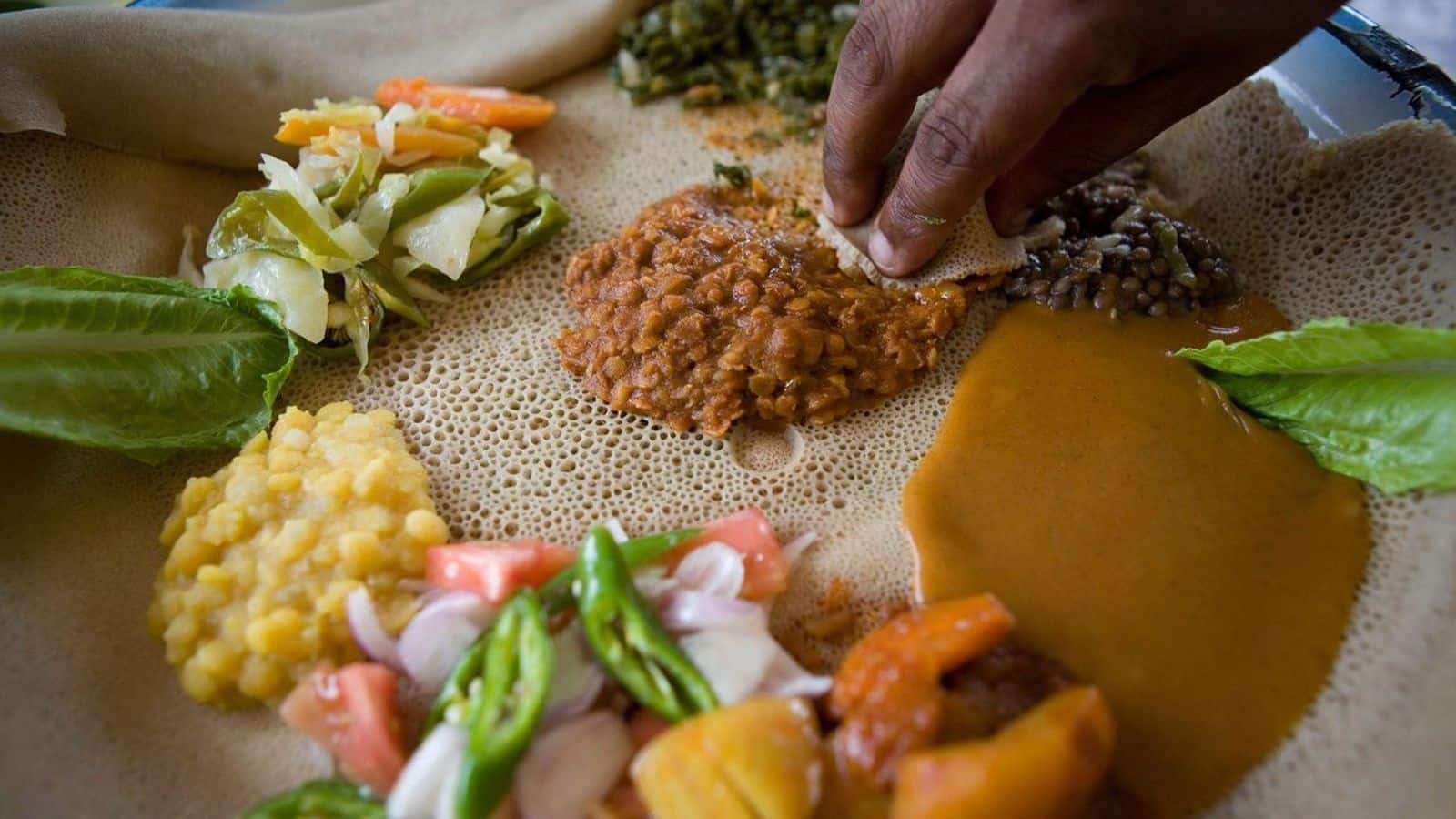
Authentic Ethiopian injera bread: A step-by-step recipe
What's the story
Injera is a staple of Ethiopian cuisine, celebrated for its unique, slightly sour flavor and spongy texture. Traditionally crafted from teff flour, a grain indigenous to Ethiopia, it serves not just as a food item but also as an eating utensil for scooping up various dishes. The preparation of injera is deeply embedded in cultural significance, often bringing families together. Now, let's get cooking!
Ingredients list
Gather the following ingredients
To make authentic Ethiopian Injera bread, you will need two cups of teff flour (the traditional grain used in Ethiopia), three cups of water (adjust as needed for batter consistency), one-half teaspoon of salt (to taste), and one teaspoon of baking powder (to aid in fermentation and achieve the desired spongy texture). Ensure all ingredients are at room temperature to facilitate the fermentation process.
Step 1
Preparing the batter
Mix teff flour and water in a large bowl, whisking to a smooth, pancake-like batter. It should be pourable but not too thin. Cover with a cloth and leave in a warm place to ferment for one to three days, depending on your preference for sourness. This process is crucial for developing injera's signature flavor and texture.
Step 2
Cooking the injera
After fermentation, stir the batter well and add salt and baking powder. Mix thoroughly until everything is well incorporated. Heat a nonstick pan or skillet over medium heat. You do not need oil due to injera's nonstick nature when cooked correctly. Pour enough batter into the pan to cover the bottom in a thin layer, swirling quickly to spread evenly.
Step 3
Achieving perfect texture
Cook until holes appear on the injera's surface and its edges start to lift from the pan, showing it's done on one side, typically in two to three minutes. Injera is not flipped like pancakes or crepes; it cooks thoroughly from one side. Once done, gently remove it from the pan and place it flat on a clean cloth or plate.
Step 4
Serving suggestions
Traditionally, injera is served with a variety of dishes such as lentils, vegetables, or stews, which are placed on top or beside it on a large platter. This unique bread acts as both spoon and plate in Ethiopian dining culture. To enjoy an authentic experience, guests tear off pieces of injera with their hands and use them to scoop up their chosen accompaniments.